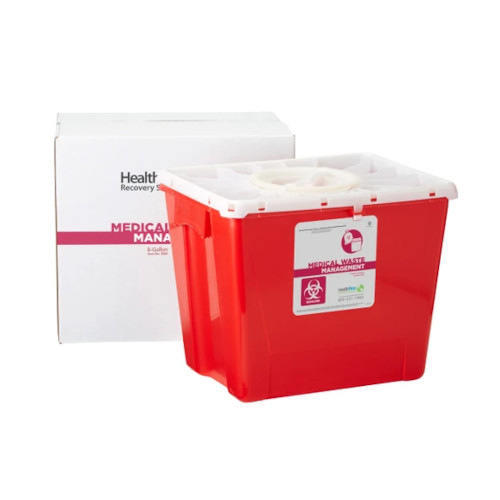Proficiency Unleashed: Mastering the Art of Medical Waste Removal for Health Facilities
Proficiency Unleashed: Mastering the Art of Medical Waste Removal for Health Facilities
Blog Article
Recognizing the Various Types of Waste Disposal Methods
In the world of waste monitoring, the variety of disposal strategies available today is large and varied, each technique offering a distinctive purpose in dealing with the difficulty of garbage disposal. click here. From recycling techniques that intend to give new life to materials, to the complex procedures of hazardous waste administration, the landscape of garbage disposal is intricate yet crucial for environmental sustainability. Comprehending the subtleties of these various strategies not just clarifies the importance of responsible waste administration however likewise motivates us to reassess our strategy in the direction of garbage disposal in a swiftly evolving world

Recycling Techniques
Recycling methods are critical for lasting waste management techniques in both property and industrial settings. medical waste removal. By carrying out effective recycling strategies, a considerable amount of waste can be drawn away from landfills, conserving natural sources and reducing the ecological effect of production procedures
In houses, curbside recycling programs play an important duty in encouraging houses to separate recyclable products from general waste. Products such as paper, plastics, glass, and metals can be sorted and accumulated for processing right into new products, lowering the need for basic materials and energy-intensive production procedures.
Industrial centers additionally rely on reusing approaches to decrease waste generation and advertise a round economic climate. By applying closed-loop systems, companies can recycle products within their production processes, lowering costs and environmental impact. medical waste removal service. Furthermore, commercial recycling programs frequently include collaborations with specialized reusing centers to guarantee that materials are appropriately arranged, refined, and reintegrated into the supply chain
Composting Methods

Aerated fixed pile composting entails mixing natural waste materials in a big heap and on a regular basis turning it to make sure proper oygenation. This strategy is appropriate for smaller-scale procedures and homes.
In-vessel composting entails placing natural waste in a shut container with controlled problems for temperature level and aeration. This approach works for handling food waste in city areas. Windrow composting includes forming long rows of natural waste and routinely turning them to promote disintegration. This method is commonly used in farming setups.
Garbage Dump Disposal
Land fill disposal is a generally made use of approach for taking care of waste that can not be reused or composted. Methane gas, a by-product of breaking down organic waste in landfills, is often accumulated and made use of as a source of renewable power. Initiatives to decrease reliance on land fills consist of promoting waste reduction, reusing, and checking out alternative waste disposal methods to decrease the environmental footprint associated with typical garbage dump disposal practices.

Waste-to-Energy Incineration
Incineration of waste for power generation is a method progressively being taken into consideration as an alternative to standard landfill disposal methods. Waste-to-energy incineration involves the combustion of waste products at high temperatures, commonly in specialized facilities developed to create basics electricity or warm with the procedure - click here. This method not just reduces the volume of waste that would certainly or else be destined for garbage dumps yet also takes advantage of the warmth produced during incineration to develop power
One of the essential benefits of waste-to-energy incineration is its capacity to create electrical power while lessening the ecological impact compared to traditional land fill disposal approaches. By converting waste into energy, this method assists in lowering greenhouse gas exhausts and reliance on fossil fuels for energy generation. Furthermore, waste-to-energy facilities are furnished with innovative air contamination control modern technologies to mitigate potential toxic wastes released during the combustion process.
Hazardous Waste Management

Considering the critical importance of liable waste monitoring methods, especially in the world of ecological sustainability, the focus now changes in the direction of the complex domain of Hazardous Waste Monitoring. Harmful waste presents significant risks to both human wellness and the atmosphere, necessitating specialized handling and disposal strategies. Typical examples of contaminated materials consist of chemicals, batteries, pesticides, and digital waste.
Contaminated materials Management entails the recognition, collection, transportation, therapy, and disposal of materials regarded possibly dangerous or unsafe. This process requires adherence to rigorous policies and standards to reduce adverse effects on communities and public wellness. Different approaches are employed in taking care of dangerous waste, consisting of recycling, protected land fills, encapsulation, and chemical treatment.
Correct Hazardous Waste Monitoring is essential for protecting against contamination of soil, water resources, and air contamination. It is vital for industries, labs, medical care facilities, and other generators of unsafe waste to execute durable monitoring techniques, training programs, and emergency situation response prepares to make certain the safe handling and disposal of these materials. Failing to take care of contaminated materials properly can have far-ranging consequences, underscoring the value of accountable and persistent practices in this area.
Verdict
In conclusion, waste disposal strategies play a crucial duty in handling and lessening the effect of waste on the atmosphere. It is essential for sectors and people to comprehend the different waste disposal strategies readily available and select the most suitable method for lasting waste administration.
In the realm of waste management, the selection of disposal methods offered today is vast and differed, each technique serving a distinctive function in dealing with the challenge of waste disposal. click here. From reusing approaches that intend to give new life to products, to the complex processes of hazardous waste monitoring, the landscape of waste disposal is complicated yet important for environmental sustainability. Recognizing the subtleties of these different strategies not just sheds light on the relevance of liable waste administration but additionally prompts us to reassess our technique towards waste disposal in a swiftly progressing world
Initiatives to decrease dependence on garbage dumps consist of advertising waste decrease, recycling, and exploring alternate waste disposal methods to lessen the environmental impact associated with typical garbage dump disposal techniques.
It is essential for sectors and individuals to recognize the different waste disposal methods available and select the most appropriate technique for lasting waste management.
Report this page